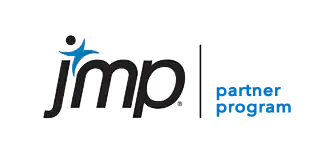Expertise & Capabilities
Adsurgo is a professional services company solving problems through direct engagement consulting services and training workshops focused on the use of analytics.
CAPABILITIES
What We Do
ASCEND WITH ANALYTICS
Industries
ANALYTICS COURSES
Now Registering
| Event | Date | Description | |
|---|---|---|---|
| Quality by Design for the Life Cycle of an Analytical Procedure (2.0 days) |
| Quality by Design for the Life Cycle of an Analytical Procedure (2.0 days): The pharmaceutical industry relies on analytical procedures for the combined practices of process and formulation development, process validation, and manufacturing, as well as both in-process and final-product testing. These test methods need not only be validated but reliable and fit for its intended use. This course provides a systematic approach to the lifecycle of analytical procedures that begins in procedure design and development, continues in procedure performance qualification, and is maintained in continued procedure performance verification. Quality by Design for the Life Cycle of an Analytical Procedure
Outline:
|
View Outline and Register |
| Statistics for FDA Process Validation (3.0 days): |
| Statistics for FDA Process Validation (3.0 days): This course focuses on how to establish a systematic approach to implementing statistical methodologies into a process development and validation program consistent with the FDA guidance. This course teaches the application of statistics for setting specifications and assessing measurement systems (assays), using design of experiments (DOE) for process design, establishing a strategy for process qualification, and ensuring process control/capability. All concepts are taught within the three-stage product cycle framework defined by requirements in the process validation regulatory guidance documents. Statistics for FDA Process Validation Objectives:
Stage 1 – Process Design Stage 2 – Process Qualification Stage 3 – Continued Process Verification Outline: 2. Primer on Statistical Analysis 3. Foundational Requirements for Process Validation 4. Stage 1 – Process Design 5. Stage 2 – Process Qualification 6. Stage 3 – Continued Process Verification 7. Advanced Methodologies (Optional) Appendix A – Capstone Exercise |
View Outline and Register |
| What's New in JMP 18....and JMP 17! |
| During a recent What’s New in JMP 18 seminar, the customers kept asking about other new JMP features. These other new features were new, but they were new in JMP 17! JMP updates software so frequently, many customers don’t have time to learn new features of one version before the next version is out. This complementary seminar will benefit those customers that are still using JMP 17 as well as those that have updated to JMP 18. Thursday August 1, 2024 from 1:00 – 3:00 Eastern Time |
View Outline and Register |
| Spec Setting and Stability Analysis using JMP (0.5 days) |
| Spec Setting and Stability Analysis using JMP (0.5 days): This course provides instruction on how to use JMP statistical software for setting specifications and stability analysis including degradation analysis using the Arrhenius acceleration factor. Spec Setting and Stability Analysis using JMP Objectives:
Outline: 1. Setting Specifications 2. Stability Analysis |
View Outline and Register |
| Applied Statistics for Scientists (2.0 days) |
| Applied Statistics for Scientists (2.0 days): This course provides instruction on how to apply scientific approaches to data analysis by focusing on appropriate methods for analysis: descriptive statistics, hypothesis testing, analysis of variance and model building. Applied Statistics for Scientists Objectives:
Outline: 1. Descriptive Statistics 2. Intervals 3. Hypothesis Testing 4. ANOVA 5. Simple Linear Regression 6. Model Building 7. Model Diagnostics |
View Outline and Register |
| Quality by Design (QbD) using DOE (3.0 days) |
| Quality by Design (QbD) using DOE (3.0 days): This course focuses on This course focuses on how to establish a systematic approach to pharmaceutical development that is defined by Quality-by-Design (QbD) principles using design of experiments (DOE). In addition, this course teaches the application of statistics for setting specifications, assessing measurement systems (assays), developing a control plan as part of a risk management strategy, and ensuring process control/capability. All concepts are taught within the product quality system framework defined by requirements in regulatory guidance Quality by Design (QbD) using DOE Objectives:
Outline 1. Introduction to Quality by Design (QbD) 2. Primer on Statistical Analysis 3. Foundational Requirements for QbD Studies 4. Introduction to Design of Experiments (DOE) 5. Screening Designs – Identifying Critical Process Parameters 6. Response Surface Designs – Develop Functional Relationships and Establish Design Space 7. Specialized Designs 8. Utilizing Systematic Understanding from QbD Studies 9. Advanced DOE Methodologies (Self Study) |
View Outline and Register |
| Design of Experiments (DOE) using JMP (1.0 days) |
| DOE using JMP (1.0 days): This course focuses on how to establish a systematic approach to pharmaceutical development using design of experiments (DOE). All concepts are taught within the product quality system framework. Design of Experiments (DOE) using JMP:
Outline:
|
View Outline and Register |
| Advanced Design of Experiments (1.0) Days |
| JMP Advanced DOE (1.0 days): This course builds on the DOE Using JMP material by providing more insight into the metrics of good designs such as prediction variance, power analysis, design optimality, and correlation between factors. We build on custom designs with constrained design regions/disallowed combinations and augmenting existing designs with new runs. We introduce new classes of designs useful in many practical applications: split plot designs (hard-to-change factors), space filling designs, mixture designs, and supersaturated (more factors than runs) designs. JMP Advanced DOE Objectives:
Outline:
|
View Outline and Register |
| Reliability Engineering and Survival Analysis (1.0 days) |
| Statistical Methods for Reliability Engineering and Survival Analyses: This course covers the graphical and quantitative methods used reliability and survival analysis using JMP software. We will explore statistical methods to characterize and predict reliability and probability of survival. Topics include censoring, probability distributions—particularly Weibull and Lognormal, sample size determination, degradation/stability analysis, reliability with covariates/predictor variables, survival analysis, and fitting parametric survival models. Statistical Methods for Reliability Engineering and Survival Analyses Objectives:
1. Introduction to Reliability Methods 2. Reliability and Survivability Models 3. Advanced Approaches |
View Outline and Register |
| Demonstration of Comparability for Chemistry, Manufacturing, and Controls (CMC) in the Pharmaceutical Industry (0.5 days) |
| Demonstration of Comparability for Chemistry, Manufacturing, and Controls (CMC) in the Pharmaceutical Industry (0.5 days): The FDA comparability guidance (1996) recognizes the need for manufacturers to improve manufacturing processes and analytical procedures without performing additional clinical studies to demonstrate product safety and efficacy. This guidance was extended in ICH Q5E (2004) to provide additional direction for comparing pre- and post-change manufacturing processes.
Across the regulatory documents, there are only high-level recommendations for the design of an equivalence/comparability study and for setting acceptance criteria to assess the impact of the change. These documents do not generally contain prescriptive rules for setting acceptance criteria, study design, or statistical procedures for analysis. One notable exception is the draft guidance published by FDA (2019) concerning demonstration of analytical similarity. EMA also produced a report based on comments offered on a reflection paper concerning analytical comparability and similarity (2018). This course presents statistical approaches for demonstrating comparability consistent with these regulatory guidelines. In addition, this course provides JMP scripts for power and sample size determinations as well as appropriate constants for intervals used to calculate quality ranges: Demonstration of Comparability for CMC in the Pharmaceutical Industry:
Examples discussed in the course include: qualification of reference standards, comparison of manufacturing sites, partitioning of variation in gene and cell therapies, analytical bridging studies, tech and analytical transfer, scale-down model (SDM) qualification, and analytical similarity of biosimilars. Methods discussed in the course include: side-by-side plots, statistical equivalence tests for means (TOST), non-inferiority of standard deviations, and quality ranges (min-max intervals, tolerance intervals, 3-sigma intervals, and risk-based side-by-side intervals). Outline:
|
View Outline and Register |
We're Here To Help!
Adsurgo LLC
San Antonio, TX 78232

